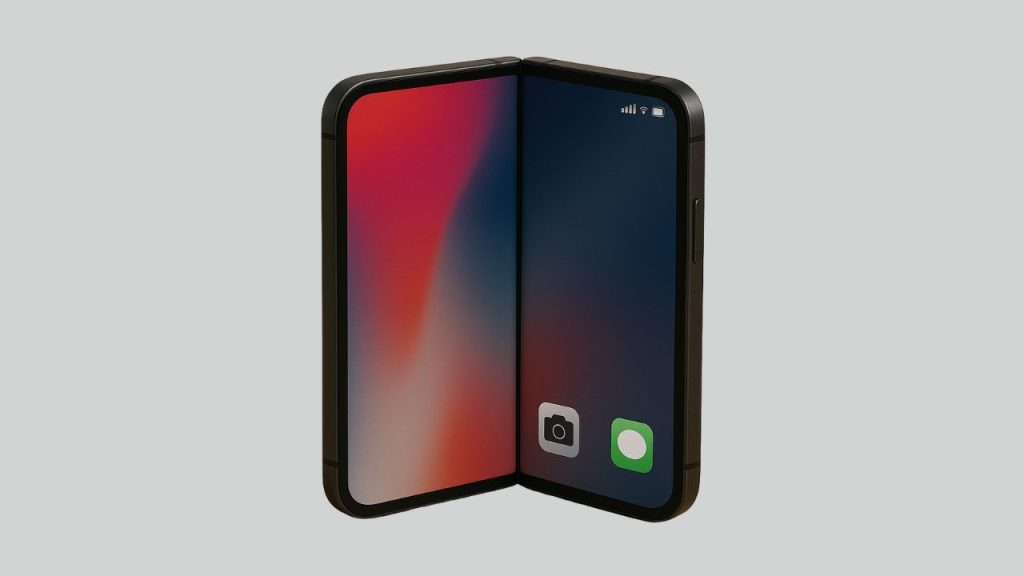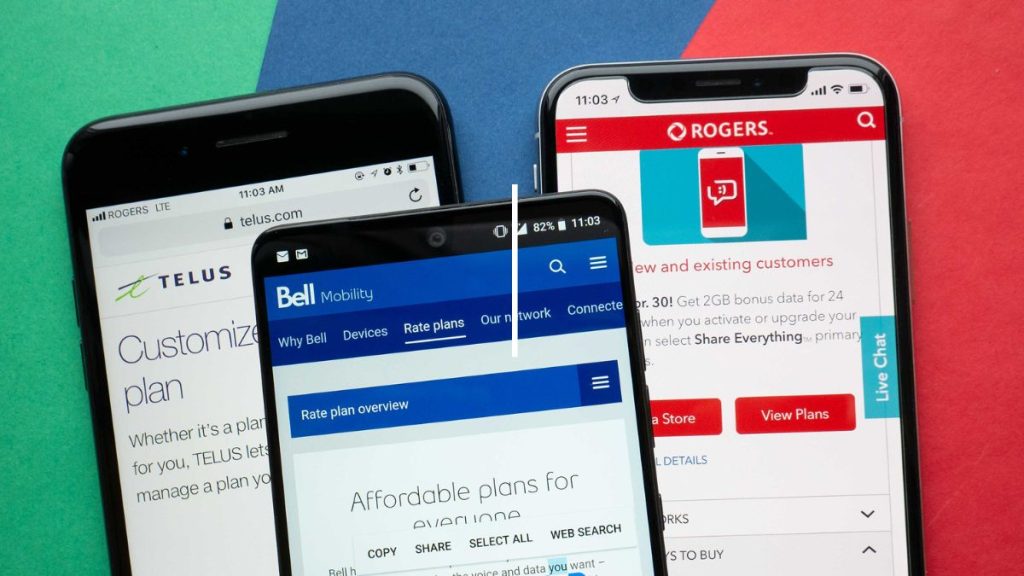Although Bell operates across Canada, its history is particularly intertwined with that of Vidéotron in Quebec. In this French-speaking province, the two telecommunications giants have been locked in fierce competition for over thirty years, marked by a series of acquisitions. But that’s not all—these operators are not just telecom providers; each one runs a powerful media empire of their own.

Find the plan that fits your needs and budget!
History
Bell, the oldest provider
Founded in 1880, Bell is Canada’s oldest telecom provider. Initially focused on telephones, Bell expanded its services to include cellular in 1985 and internet in 1990. By the late 1990s, the company diversified further with satellite television and media ventures.
Vidéotron, the Pioneer
Founded in 1964, Vidéotron quickly grew, introducing innovations like pay-per-view television and a bidirectional network. Strongly rooted in Quebec, the company resisted a takeover attempt by Rogers in 2000 before being acquired by Québecor. Today, Vidéotron is a major player, offering competitive pricing that has helped drive down costs across the province.
Coverage and Network
Bell claims 99% coverage across Canada, while Vidéotron boasts 100% coverage, thanks to agreements with other operators in provinces outside of Quebec. However, these figures pertain to 4G LTE technology, as the rollout of 5G is still ongoing.
Currently, about 30% of Bell’s customers in Canada have access to 5G. In terms of call quality, both 5G and 5G+ offer similar results. 5G+ utilizes high-frequency millimeter waves (mmWave), but this does not affect call quality. The quality will primarily depend on your location relative to the operator’s antennas.
5G Network Expansion
Bell is actively deploying its 5G and 5G+ networks across Canada, offering faster speeds and lower latency in many regions. The 5G+ network uses the 3500 MHz spectrum to enhance wireless technology.
In contrast, Vidéotron is gradually rolling out its 5G and 5G+ networks in various regions of Quebec, including Montreal, Quebec City, Estrie, and Saguenay–Lac-Saint-Jean. All mobile plans with data include access to these networks at no additional cost.
Comparison of Cell Phone Plans
Bell and Vidéotron offer a wide range of cell phone plans suited to all needs. Whether you’re looking for a basic plan for occasional use or a premium plan with a large data allowance for streaming and browsing, both operators have options to meet your expectations.
One of the major advantages of Bell and Vidéotron is their ability to offer unlimited data plans, a rare feature in the industry. Here are some of the most attractive cell phone plans from each provider:

Bell
Cell Phone Plan
100 GB of mobile data-
Unlimited Calls
-
Unlimited Messages
-
BYOD
-
Quebec

Vidéotron
Cell Phone Plan
65 GB of mobile data-
Unlimited Calls
-
Unlimited Messages
-
BYOD
-
Quebec

Bell
Cell Phone Plan
100 GB of mobile data-
Unlimited Calls
-
Unlimited messages
-
BYOD
-
Ontario

Vidéotron
Cell Phone Plan
100 GB of mobile data-
Unlimited Calls
-
Unlimited Messages
-
BYOD
-
Ontario
Comparison of Mobile Plans with Devices
If you’re looking for a new smartphone, the iPhone 16 and Samsung Galaxy S24 are among the most impressive options available at Bell and Vidéotron.
These providers offer flexible purchasing options, whether you want to buy your device outright or spread the cost over two years. With Bell and Vidéotron, you have the option to return the phone after the payment period, or if the model suits you perfectly, simply pay off the balance to keep it for good. Whether you choose Apple’s iPhone 16, known for its sleek design and powerful features, or Samsung’s Galaxy S24, renowned for its cutting-edge technology, Bell and Vidéotron have exactly what you need.

Bell
iPhone 16
128 GB
200 GB of mobile data
-
Unlimited Calls
-
Unlimited Messages
-
Upfront: $70.00
-
Quebec

Vidéotron
iPhone 16
128 GB
55 Go of mobile data
-
Unlimited Calls
-
Unlimited Messages
-
Upfront: $0.00
-
Quebec

Bell
iPhone 15
128 GB
75 GB of mobile data
-
Unlimited Calls
-
Unlimited Messages
-
Upfront: $70.00
-
Quebec

Vidéotron
Iphone 15
128 GB
55 GB of mobile data
-
Unlimited Calls
-
Unlimited Messages
-
Upfront: $0.00
-
Quebec

Bell
Galaxy S24
128 GB
75 GB of mobile data
-
Unlimited Calls
-
Unlimited Messages
-
Upfront: $70.00
-
Quebec

Vidéotron
Galaxy S24
128 GB
75 GB of mobile data
-
Unlimited Calls
-
Unlimited Messages
-
Upfront: $1098.00
-
Quebec

Bell
Google Pixel 9 128 GB
75 GB of mobile data-
Unlimited Calls
-
Unlimted Messages
-
Upfront: $70.00
-
Quebec

Vidéotron
Google Pixel 9 128 GB
55 GB of mobile data-
Unlimited Calls
-
Unlimited Calls
-
Upfront: $1098.00
-
Quebec
Pros and Cons
hoosing between Bell and Vidéotron can be complex, as each provider offers notable advantages but also presents some drawbacks. To help you compare their offers and services, here’s a summary table of the strengths and weaknesses of each.
| Provider | Strengths | Weaknesses |
|---|---|---|
| Bell | – High-speed fiber optic technology | – High pricing |
| – 5G+ technology | – Customer service needs improvement | |
| – Pioneer in technological innovation | – Significant costs | |
| Vidéotron | – Competitive mobile plan prices | – Non-bundled billing |
| – Well-regarded customer service | – Unforeseen price increases | |
| – Attractive special offers | – Occasional internet network issues |
User Reviews
Vidéotron’s reputation is mixed. Many customers appreciate its promotional offers, competitive pricing, and customer service. However, some criticisms have emerged regarding unexpected price increases, the lack of bundled billing for multiple services, and occasional network issues. On PlanHub, reviews mostly highlight the affordable prices and, in some cases, the quality of customer service, but they also mention frustration with sudden price hikes and separate billing for each service.
On the other hand, Bell stands out for its solid and reliable network, praised by users for the speed and stability of its internet service. However, the company has a negative image due to the high number of complaints filed with the CRTC up until 2021, primarily concerning billing issues and contract disputes. Bell claims to have made significant improvements since 2016 to enhance its customer service, particularly by strengthening its processes with authorized agents. While criticisms about the high cost of mobile plans and additional fees persist, Bell has reported a notable decrease in complaints over the years, indicating a move toward improved customer satisfaction.
FAQ
How do I reach Bell Mobility by phone?
Bell can be reached by telephone at 1 800 667 0123. Bell also provides a dedicated service for people with visual, hearing or motor impairments at 1 866 310 Bell (2355).
How do I view my Bell Mobility invoice?
To view your Bell Mobility invoice, go to the Bell billing page and log in to your account. MyBell – Self-service – Login You can also download the Bell application for Android MyBell – Application on Google Play or iOS MyBell on the App Store (apple.com)
How can I lower Videotron prices?
There are several ways to lower Videotron’s price.
- PlanHub lets you compare prices and access Videotron discounts.
- By adding a cellular package to your Internet package, Videotron will offer you a minimum $10 rebate.
- If your subscription is about to expire, you can also negotiate a new two-year commitment, which will entitle you to a discount. It’s in Videotron’s interest to keep you as long as possible because you’re worth more to them. Subscribing to a new two-year contract is therefore your assurance that you’ll stay.
How do I reach Videotron?
You can reach Videotron by telephone at 1 877 512 0911. You can also chat with a customer support representative by following this link and clicking on Chat.
- To cancel the mobility service, call 1 800 667 123
- To cancel your Internet, Fibe TV, or telephony service call 1 866 342 7367
- To cancel your Bell Satellite TV service, call 1 888 759 3474.
How do I log in to my Videotron account?
The best way to reach the Videotron Customer Centre is to go to this page and select the service you wish to connect to. Then simply enter your login and password.
- To cancel the mobility service, call 1 800 667 123
- To cancel your Internet, Fibe TV, or telephony service call 1 866 342 7367
- To cancel your Bell Satellite TV service, call 1 888 759 3474.
How do I cancel a contract with Bell?
To cancel a contract with Bell, you must contact the customer service department dedicated to the service you wish to cancel.
- To cancel the mobility service, call 1 800 667 123
- To cancel your Internet, Fibe TV, or telephony service call 1 866 342 7367
- To cancel your Bell Satellite TV service, call 1 888 759 3474.








